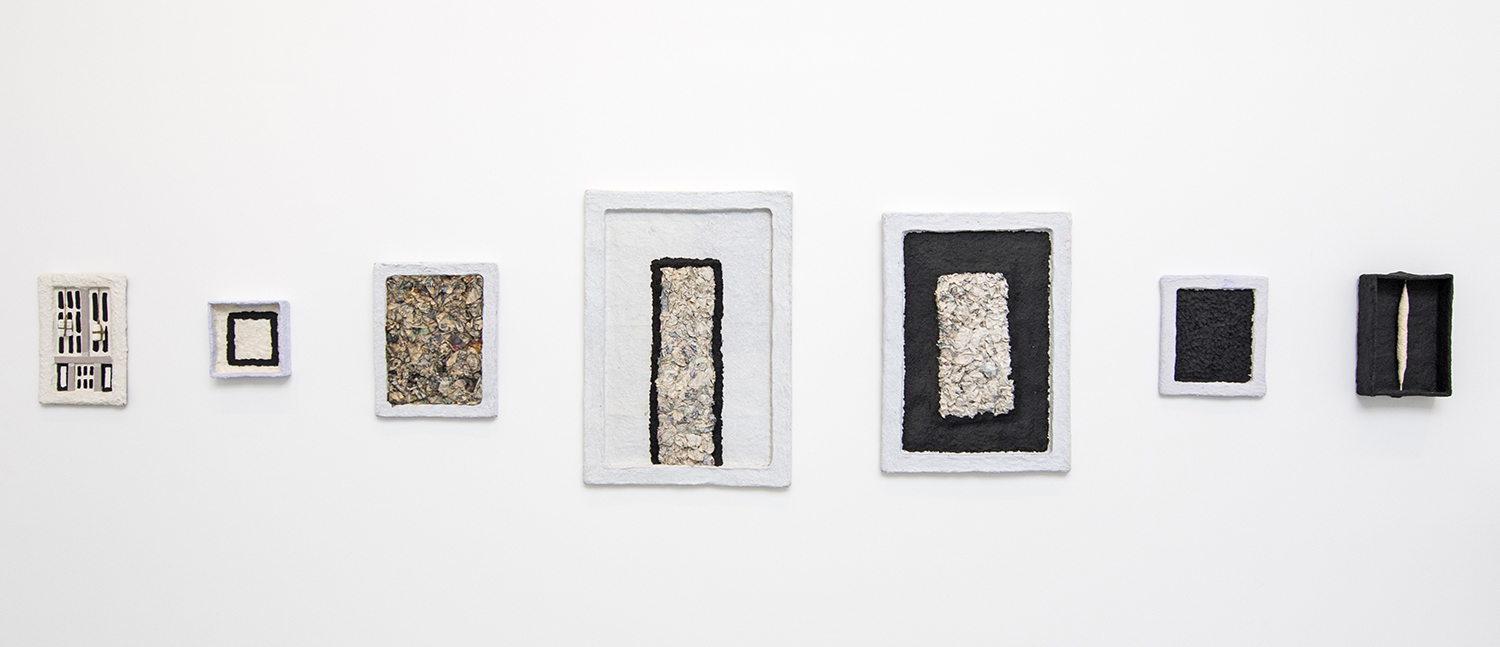Shows
Mohammed Ahmed Ibrahim's “Elements”


In the courtyard in front of one of the galleries in the Sharjah Art Foundation complex was a large standing sculpture comprised of cubes decorated with a cluster of plastic bottles, and covered with dried, spiked mounds of soil. The cubic totem complemented another installation, which hung by the entrance and featured pieces of stone with drilled holes, slung on the exterior wall in a sequence of heights and evoking early stone tools created by our prehistoric ancestors. Both works suggest that art is borne from the creative act of making and the discoveries that accompany it, highlighting the playfulness, wonder and also a sensitivity to nature that is central to the practice of their creator, Mohammed Ahmed Ibrahim.


Ibrahim, one of five conceptual artists that defined contemporary art for the United Arab Emirates, is best known for his sculptural art inspired by the natural world. Although Ibrahim has exhibited globally, he maintains a studio in his native Khor Fakkan—Sharjah’s eastern enclave between the Hajar Mountains and the Gulf of Oman—a site which continues to be a source of inspiration for him. His current solo exhibition, ‘Elements,’ curated by Hoor Al Qasimi at the Sharjah Art Foundation, was a survey of work produced over 30 years in this studio. Ibrahim was a student of the late giant of Emirati conceptual art, Hassan Sharif, and his admiration for his friend and mentor is evident in Ibrahim’s work through his use of repetition and found materials.
Ibrahim is interested in exploring art as pure expression, devoid of temporality, and he seeks to break away from contemporary constructions of art production. In his work, he distills the shapes and patterns of organisms such as animals, pollen, and bacteria into his sculptures, paintings and assemblages, as homage to the creative force of the natural world.
At the gallery, Ibrahim’s works were exhibited without labels, thus allowing visitors to interpret the pieces and wander through the space freely. Sculptures emerged from the floor or were placed on plinths; paintings, arranged in repetitive sequences, adorned the walls; and three-dimensional wall-based artworks showcased the evolution of the artist’s experimentation with material and shape. The overall effect was one of a creative journey.
As evident in the introductory presentation of installations outside of the galleries, the exhibition successfully showcased Ibrahim’s playful juxtaposition of the natural world with the human-made. For example, in one installation, which hung from the wall and cascaded down to the floor, pieces of rough stone are bound to marble by a mesh of wire, the raw texture of the rock contrasting with the marble’s smooth surfaces. Ibrahim’s use of found objects was also highlighted, such as in the hundreds of plastic bottles caps forming a pyramidal installation, each item wrapped in a colorful papier-mâché casing of earth and fiber and emulating vibrant primordial flora. More than just a formal composition, the work also seems to critique contemporary materialism and waste.

Prehistoric iconography and imagery was another recurring theme in the show. In the main gallery, we found tributes to the petroglyphs of early civilization—found in the Hajar Mountains and the surrounding regions including Khorfakkan—which are rendered in sculptural form and displayed on plinths; in another room of the gallery, a painting of triangles, circles, arrows, and lines in techi-color echoes the ancient rock art of the UAE’s eastern region. The primordial landscape was represented via amoeba-like sculptures in clay and straw that evoke both caterpillars and cacti; giant insect-like shapes made of earth were arranged in the space like guardians. These pieces drew the viewer in with their tactile materiality, the sculpted forms revealing Ibrahim’s hands embedding each grain of earth or blade of straw into the clay, and we imagine him smoothing the surfaces of his creations to life.
Ibrahim’s first major solo show in the UAE was an acknowledgement of his importance to the growth of the region’s contemporary art scene. His works bring us back to the landscape itself—in treating its color, shape and texture as mediums—and reclaim the modern manmade elements within them, in a prescient commentary on contemporary life.
Mohammed Ahmed Ibrahim's “Elements” is on view at Sharjah Art Foundation, Sharjah, until June 16, 2018.







